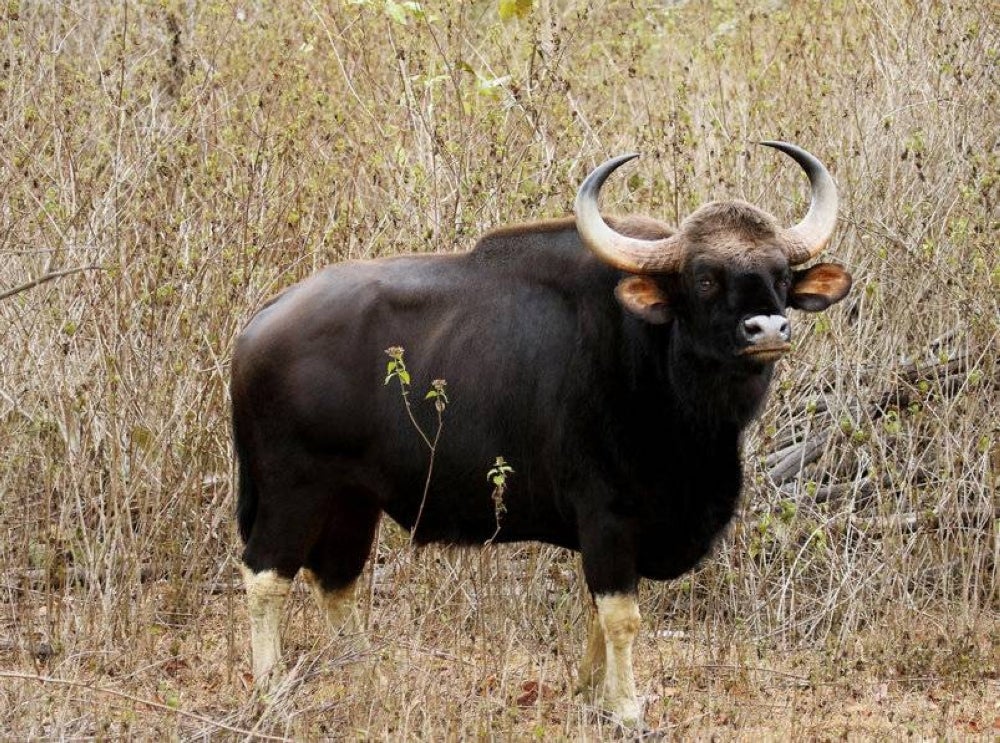BACK AND FORTH: Will gaurs face the same fate as Sumatran rhinos?

It is with the hope that Sinar Ahad’s special report on the threat of extinction of the Malayan Gaur (gaur), another iconic Malaysian animal, will raise awareness among Malaysians and other stakeholders on the support needed to conserve them.
The country has witnessed the extinction of the Sumatran rhino, which used to live in the wilderness of the Malaysian peninsular up until the 1990s.
In the case of the Sumatran rhino, it remains a tragedy as its habitat continues to shrink to a point where they only reside in the Sumatran rainforest, Peninsular Malaysia and Sabah.
It has gone extinct in Malaysia. The last one in captivity in Sabah died due to a form of cancer.
The Director of Borneo Rhino Alliance or BORA, Dr Zainal Zahari Zainuddin, who once led a breeding programme for Sumatran rhinos, said “the gaur situation is very concerning, similar to the Sumatran rhinos that eventually went extinct, not from the effects of losing its habitat or poaching but because the small population that exists do not breed.
The situation, he said, have also caused female rhinos to have diseases in their reproductive system, further affecting their breeding chances.
Apart from that, poor nutrition and decreasing numbers also contribute to the low birth rate as well as a high death rate. “After a few generations, the rate of birth has become lower than the death rate, even though there is no poaching activity,’’ added Dr Zainal.
Taking home a painful lesson that has befallen the Sumatran rhinos, a national treasure that has become extinct, Dr Zainal and his team of researchers along with teams from the Perak State Park and the state’s Wildlife and National Parks Department (Perhilitan) are rushing to ensure gaurs do not face the same fate.
Previously in 1985, this writer has reported on a rhinoceros that had fallen in a trash pit on a palm oil plantation in Endau-Rompin, Johor which then became popular worldwide because it was the only species of its kind in captivity.
What we often see in zoos around the world, including the National Zoo, are not Sumatran rhinos but other species of rhinos.
Currently, there are five types of rhinos - (i) African white rhino, (ii) African black rhino (iii) Indian rhino (iv) Javanese rhino and (v) the Sumatran rhino.
The Javanese rhino that inhabits the Ujung Kulon National Park in Pulau Jawa is the first to go extinct.
But it was discovered later through hidden cameras that up until 2020, there are 74 rhinos living in the Ujung Kulon National Park at the western part of Pulau Jawa.
Because the aforementioned national park is located near Mount Krakatao, which is an active volcano in the Sunda Strait, the Indonesian government is looking at alternative habitats as part of the conservation efforts to ensure these Javan rhinos are not threatened by the volcanic eruption from Mount Krakatao.
Indonesia has learned from its past experiences and is determined not to repeat mistakes.
While the three other rhino species are not overtly endangered and are breeding fairly well in India and Africa, the Sumatran rhino can only be found in Sumatra.
The species has gone extinct in Peninsular Malaysia and the last one under the care of BORA in Sabah had died in November 2019 due to a tumour growing on its uterus - a condition which the rhino had endured since 2014.
The following year, the species was declared as extinct in the wilderness in the Malaysian peninsular.
The last time it was detected was in 2007.
Clearly, we do not want the same fate to fall on the Malayan gaurs.
Before, its population was ubiquitous in the peninsular particularly in Krau under the Temerloh district, Pahang, to a point where it had even bred with local cows to create a hybrid species aptly named Selembu.
However, now the gaur’s wild population can only be found in a limited area in Hulu Perak, near the Royal Belum State Park and its nearby areas.
The situation is not only despairing but more concerning is the threat of extinction it faces similar to the Sumatran rhino.
We are grateful now that there are various parties working together to start the gaurs conservation efforts in the Royal Belum State Park, Perak and its nearby forest, where through research and observation, the two-year project which started last November, will ensure the survivability of the gaurs in the Malaysian peninsular for the foreseeable future.
We are thankful to the Royal Belum State Park for fully supporting the initiatives. Congratulations to Perak.
"Back and Forth" is a column by Rozaid Rahman. He is Sinar Karangkraf Group Editor-in-Chief and Chief Content Officer.














